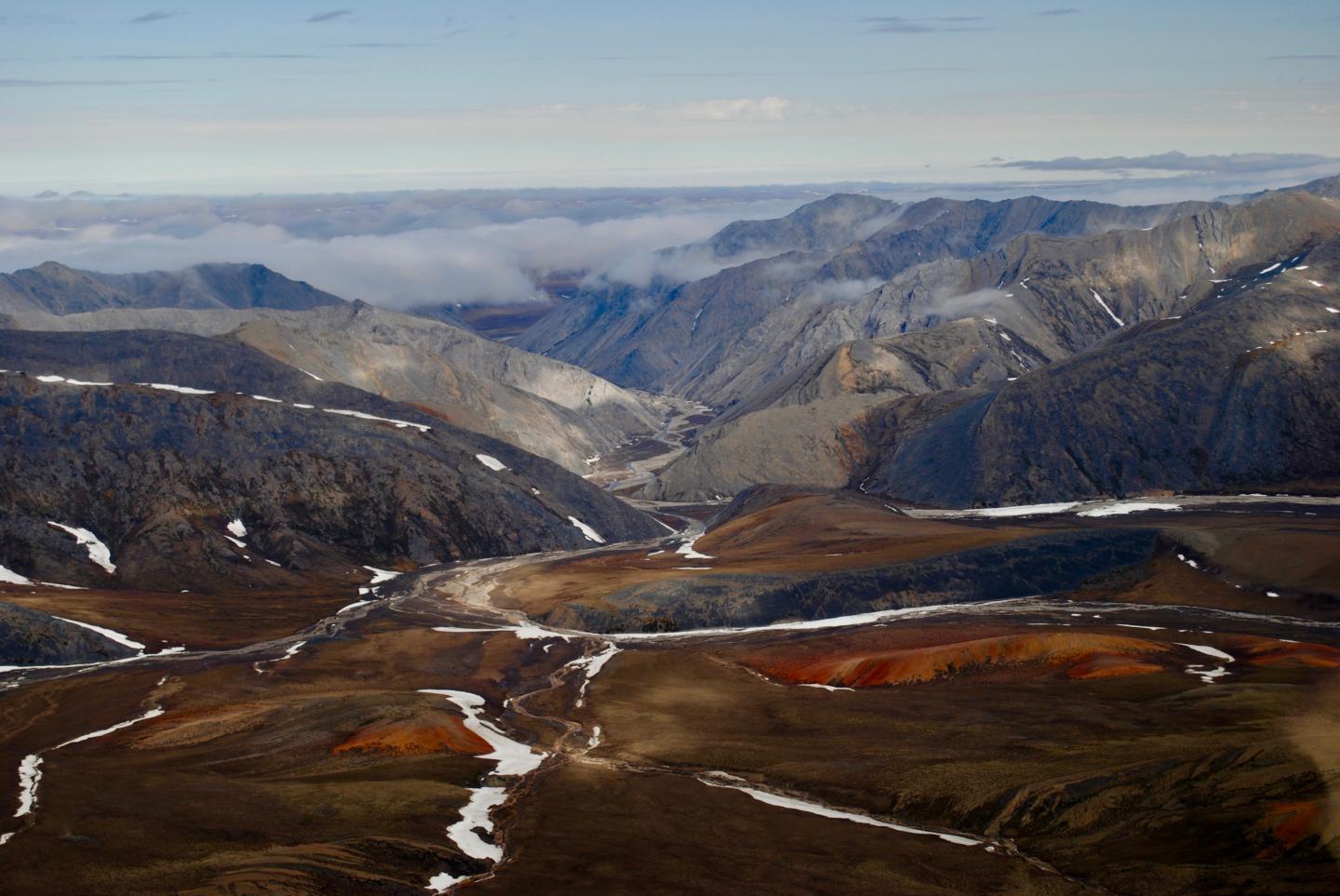Updates to the geological record connect to the region’s resources

Credit: Justin V. Strauss
HANOVER, N.H. – May 28, 2019 – Parts of Alaska’s mountainous Brooks Range were likely transported from Greenland and a stretch of the Canadian Arctic much farther to the east, according to a series of Dartmouth-led studies detailing over 300 million years of Arctic geologic history.
The finding updates the geological evolution of the Arctic Ocean and could help revise predictions about the Arctic’s oil, gas and mineral wealth.
By explaining the formation of the Arctic Ocean in the Western Hemisphere – known as the Amerasian Basin – the research provides more clues into the geological history of the rapidly changing region.
“This is arguably the most important place for the United States from the perspective of Arctic economic development,” said Justin Strauss, an assistant professor of earth science at Dartmouth. “The geology of this region, which is directly connected to its ancient history, will help revise our knowledge about natural resources in the Arctic.”
The existing model for the formation of the Arctic Ocean along the U.S. and Canada border region details how seismic activity, known as faulting, caused Alaska to rotate away from a western band of islands in the Canadian Arctic starting approximately 125 million years ago.
Under this original “rotation” scenario, parts of the Brooks Range should match perfectly with Canada’s Banks Island and Victoria Island about 450 hundred miles away.
But after close to ten years studying exposed rocks in the region, the Dartmouth studies show that the area actually contains rocks with origins as far away as 1,200 miles to the east. The results were recently published in a Special Papers series by the Geological Society of America.
“The geology of the northeastern Brooks Range does not match anything that we’ve studied in the neighboring region of North America,” said Strauss, the research lead of the study. “This complicates previous models for how you open this major ocean basin.”
Further confirming the findings, researchers in the study area saw signs of mountain-building processes that are not known to have taken place near the present position of the Brooks Range. This collision of ancient land masses dating from 400-450 million years is more closely associated with tectonic activity in the eastern Arctic.
The team believes that the area was formed by a combination of activities including the action of a major strike-slip fault system – similar to the San Andreas Fault of California – that transported part of what is now the Brooks Range from Greenland to the western Canadian Arctic Islands.
A smaller scale rotation of the land mass farther westward that has been previously recorded may complete the explanation of how northern Alaska was transported to its current location.
“Relationships on the northwestern margin of North America have long been poorly understood and poorly documented,” said Bill McClelland, a professor of earth and environmental studies at the University of Iowa and co-investigator of the study. “The results of these studies have significantly enhanced our understanding of the tectonic processes that formed the Arctic margin of North America and will be instrumental in pushing forward on new research frontiers.”
“Because of its remoteness, the North Slope of Alaska and Yukon has seen limited studies to date,” said co-investigator Maurice Colpron, a scientist with the Yukon Geological Survey. “Understanding the area with complete certainty will still take many years of hard work, but these research findings greatly advance our knowledge of the region.”
As the Arctic continues to open for the development of oil, gas and mineral resources, this new understanding of the region’s history could change predictions of how much resource wealth lies in the area.
The United States Geological Survey currently estimates that about 6 percent of the world’s oil and 25 percent of the world’s natural gas are in the Arctic. The region studied by the team lies within the Arctic National Wildlife Refuge, an area that some would like to open for oil drilling.
In addition to changing the outlook over how much resource wealth exists in the Arctic and where it sits, the research could impact how countries lay claim to those resources. The United States, Russia, Canada and other Arctic countries are all jostling for extended footholds in the region.
“If countries are going to make legal claims based on geology or geophysics, they should consider these much older boundaries that we are highlighting. Governments will to need to confront the complexities of geology meeting politics,” said Strauss.
While magnetic surveys allow researchers to understand how the Arctic’s Eurasian Basin over Europe and western parts of Asia was formed, that same data are not as easy to interpret for the Amerasian Basin above North America.
The research, funded by the National Science Foundation, is based on the existence of a major fault system in the northern part of North America that has yet to be completely mapped.
“This is the area of the Arctic Ocean that still baffles researchers. It’s one of the last major ocean basins on the planet that we just do not understand,” said Strauss.
In future studies, the research team will focus on Canada’s Yukon and Ellesmere Island to look for major fault systems. The research will retrace hundreds of millions of years of geological evolution to further explore where this part of Alaska came from and why it landed where it did.
###
Researchers from University of Iowa, West Virginia University, Yukon Geological Survey, Johns Hopkins University and University of Alaska-Fairbanks all contributed to this study.
Media Contact
David Hirsch
[email protected]
Original Source
https:/




